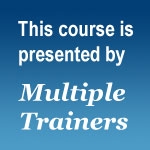

Search Results: nvc
-
When we're faced with certain situations we tend to go into a fight, flight or freeze mode. While these can sometimes be helpful and even lifesaving, they can also be crippling when the situation may not be life-threatening. In this episode, we give you some tips on how to shift into a more intentional way of handling difficult situations.
-
Explore how NVC and the Enneagram deepen understanding of personality and foster connection.
-
Sometimes there are moments when empathy has no effect at all on one another. Why? One reason could be that our brains maybe less receptive because of unseen forces that affect our nervous system and relationship to others...
-
What drew you to Nonviolent Communication? In this touching reflection, a longtime NVC trainer, Mary Mackenzie, shares the moment that first lit her up with hope.
-
This is the first in a series of tips on applying NVC to daily life. In this episode, Shantigarbha offers five tips for improving communication in relationships.
-
In this, the second in a series on applying NVC to daily life, Shantigarbha offers five tips for recognizing where communication is likely to go awry.
-
In the third in a series on applying NVC to daily life, Shantigarbha follows directly on from Episode 2, showing us that listening isn't a passive activity, and offers five tips for how to improve our listening skills.
-
In this NVC Life Hack, we look at those circumstances when we're saying yes ... but only kinda! Because we're still actually saying no. Shantigarbha and Gesine look at the needs that aren't being met.
-
This resource is free for all to enjoy during May. Sarah Peyton explains how your brain's left hemisphere excels at pattern making. NVC can help integrate both hemispheres, enabling you to use the left side's love of patterns for abstract thinking.
-
For us to have a more peaceful world and relationships, growing our skills to engage interdependently is key. An interdependence-oriented person may choose to attend to both inner factors and outer factors that affect their own and others' experiences. Unfortunately, this is likely to be misunderstood by independence-oriented people as enmeshment -- and this is where conflict emerges. Read on for more.
-
Welcome to the final video in our 3 part Embodied NVC Life Hack series. So far we've learnt about rewiring our brain from a flight, fright or freeze reaction to the choice of self-empathy, allowing us to centre and check-in with ourselves. In part two, Empathy Skills, we went beyond self-empathy to look at ways we can empathise with the other person. In this final instalment, we create a bridge from empathising to expressing.
-
This one page colour handout illustrates the focus options or intention options for connection: empathy (verbal and non-verbal), self expression, and self connection (opening our heart to self and/or others). It also offers some suggestions for how to say these things to self and others.
-
Leading a Nonviolent Communication workshop is a good way to learn and practice NVC skills. Here are Shantigrabha and Gesine's seven top tips for facilitators.
-
A 1999 discussion with youth on understanding and working with anger.
-
This chart helps translate words that imply blame into true feelings and unmet needs.
-
-
Explore NVC as a spiritual practice through dynamic conversations on compassion and transformation.
-
NVC Mingle is a fun group exercise to practice NVC principles and create quick connections with others.
-
I’m Jeff Brown, Executive Director of the Center for Nonviolent Communication. Mary asked me to be a guest writer for this newsletter, and it’s allowed me to look deeply at the role NVC plays in my life, personally and professionally— especially in running a successful NVC organization.
As the director of an NGO, I am grateful to have learned Nonviolent Communication. I utilize the principles constantly, and I’m not sure how I would survive without them.
-

Quick Links
Subscription Preferences
Stay In Touch!
Looking for ways to keep up with NVC Academy news, get special offers, free resources, or words of inspiration? Here are five ways to stay engaged:


















